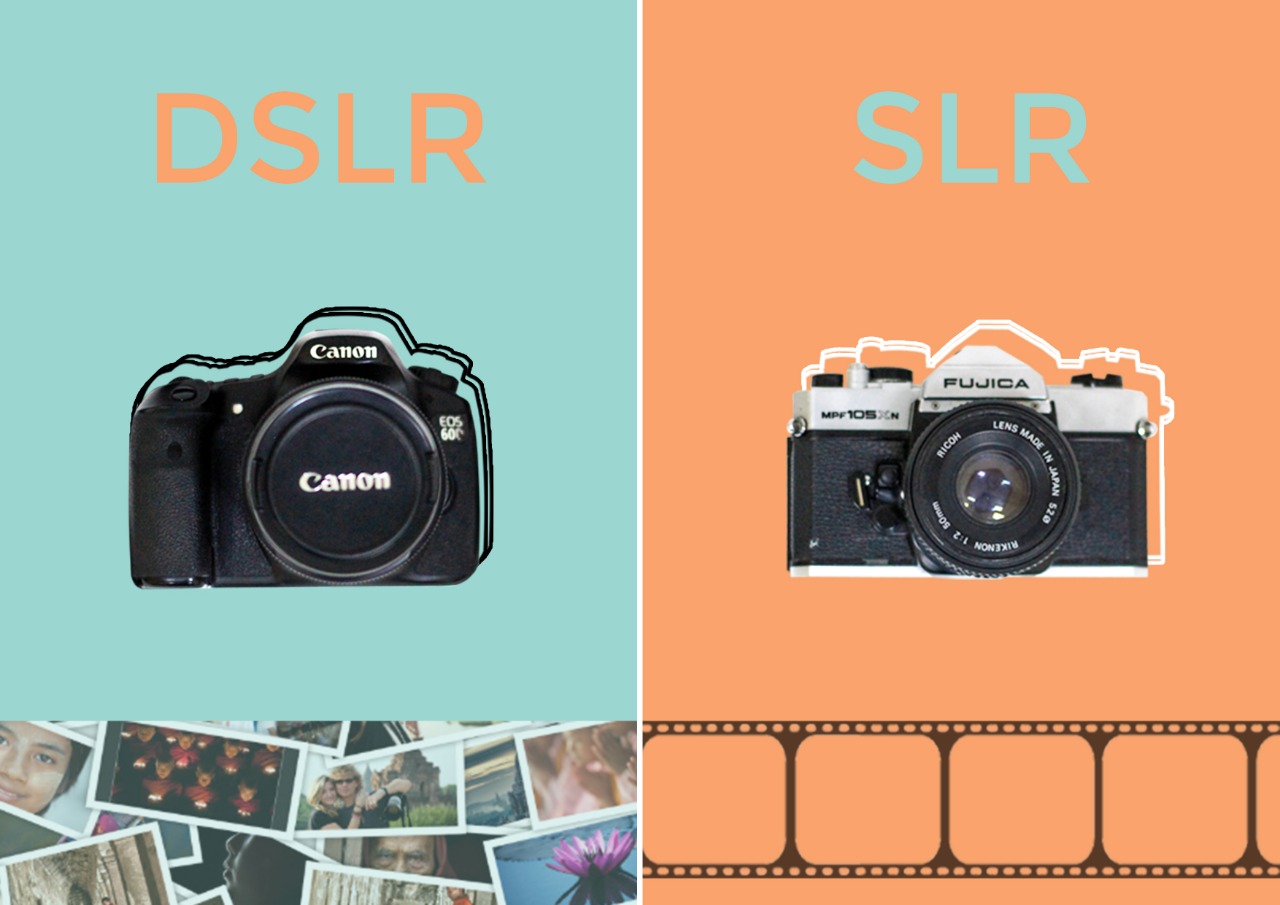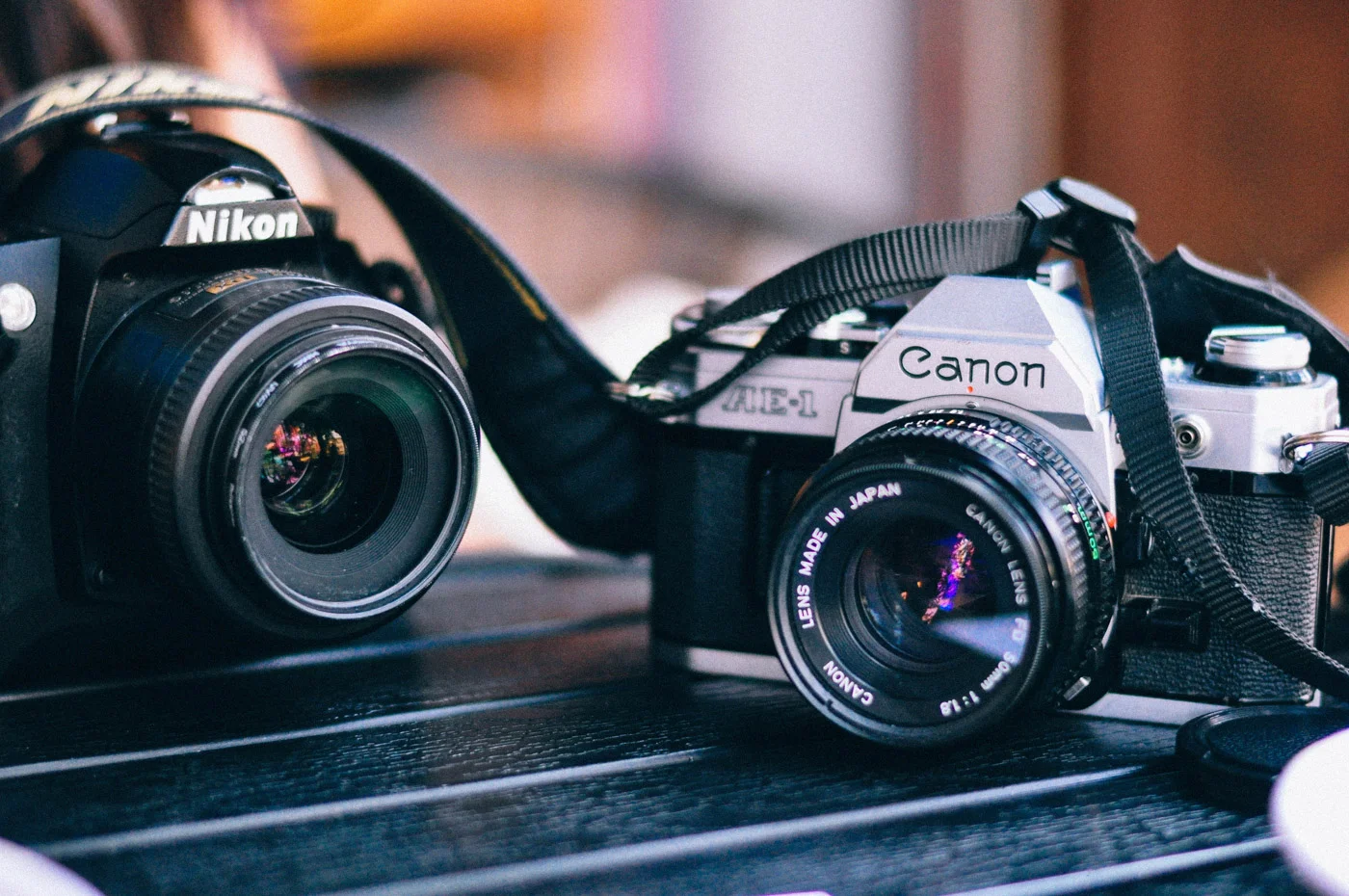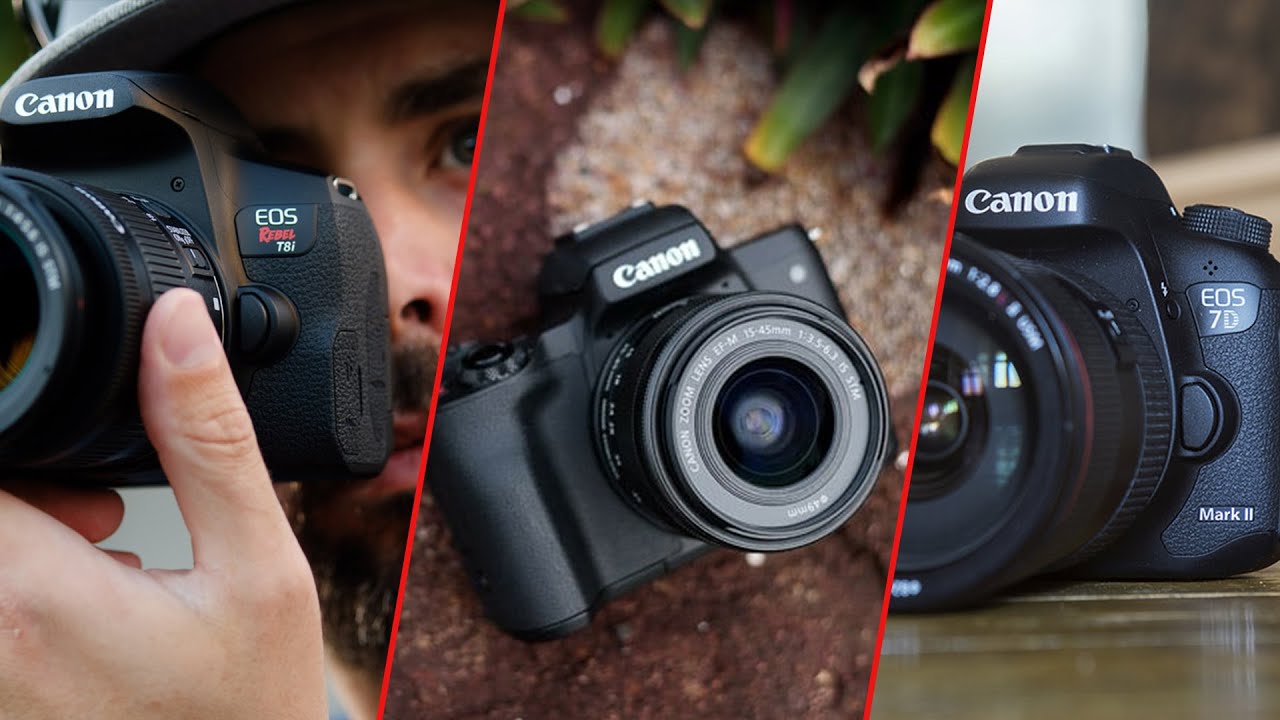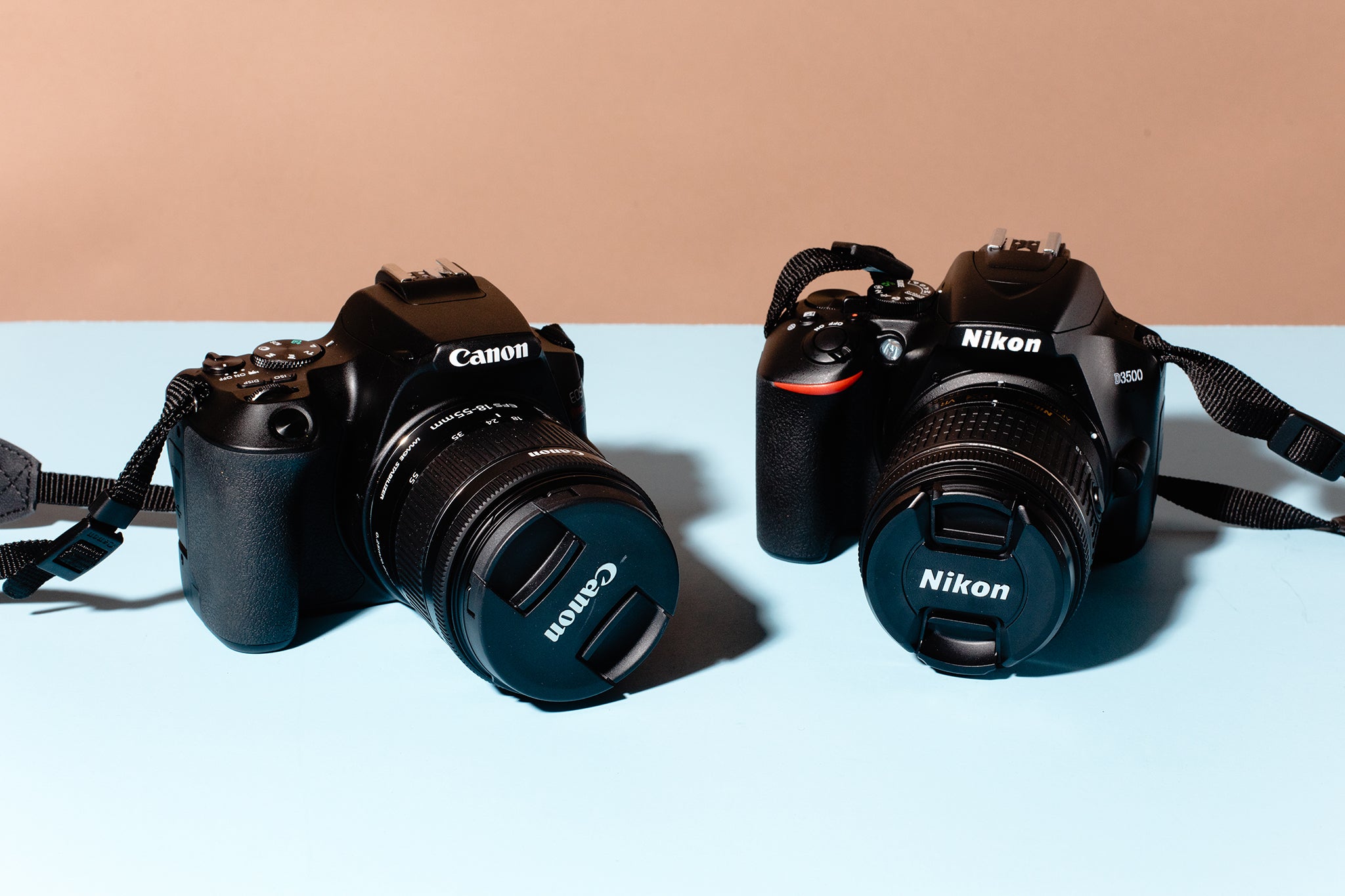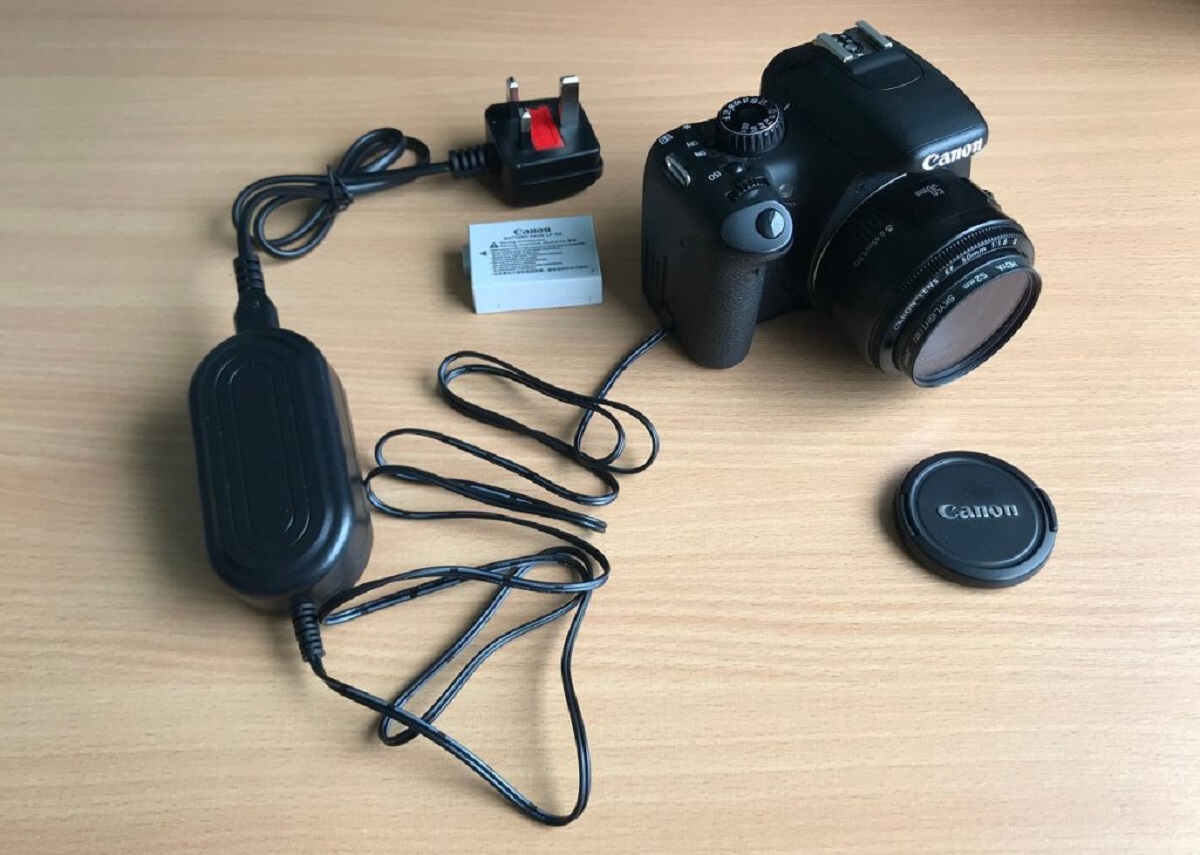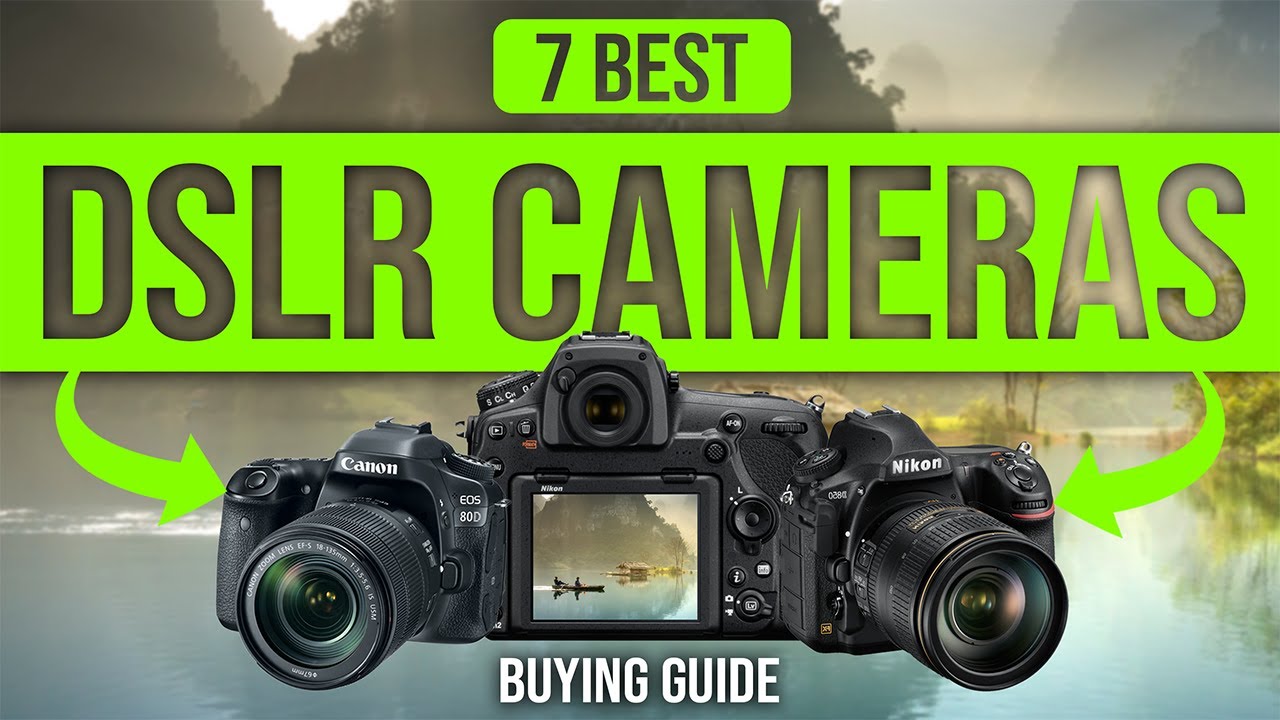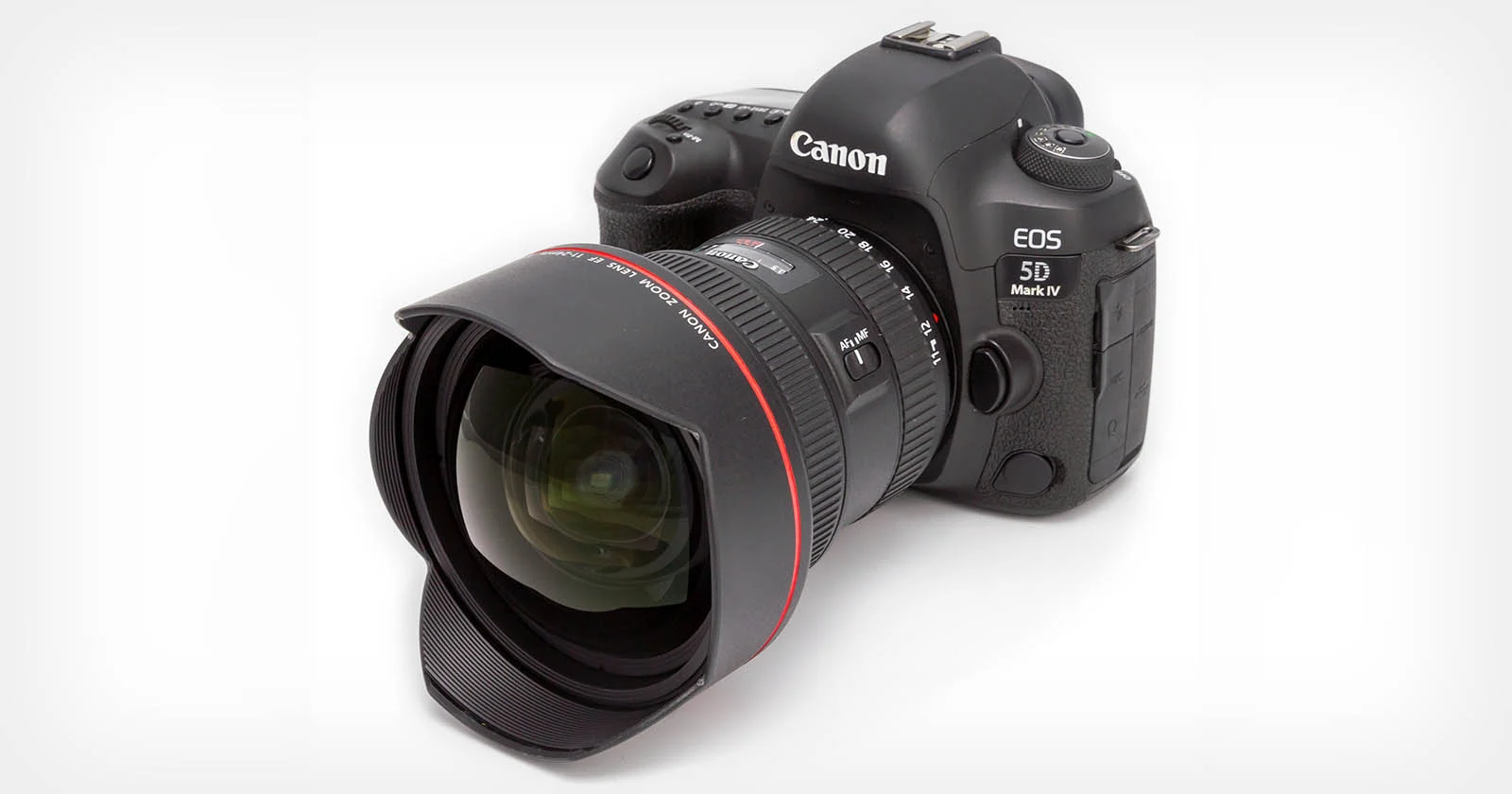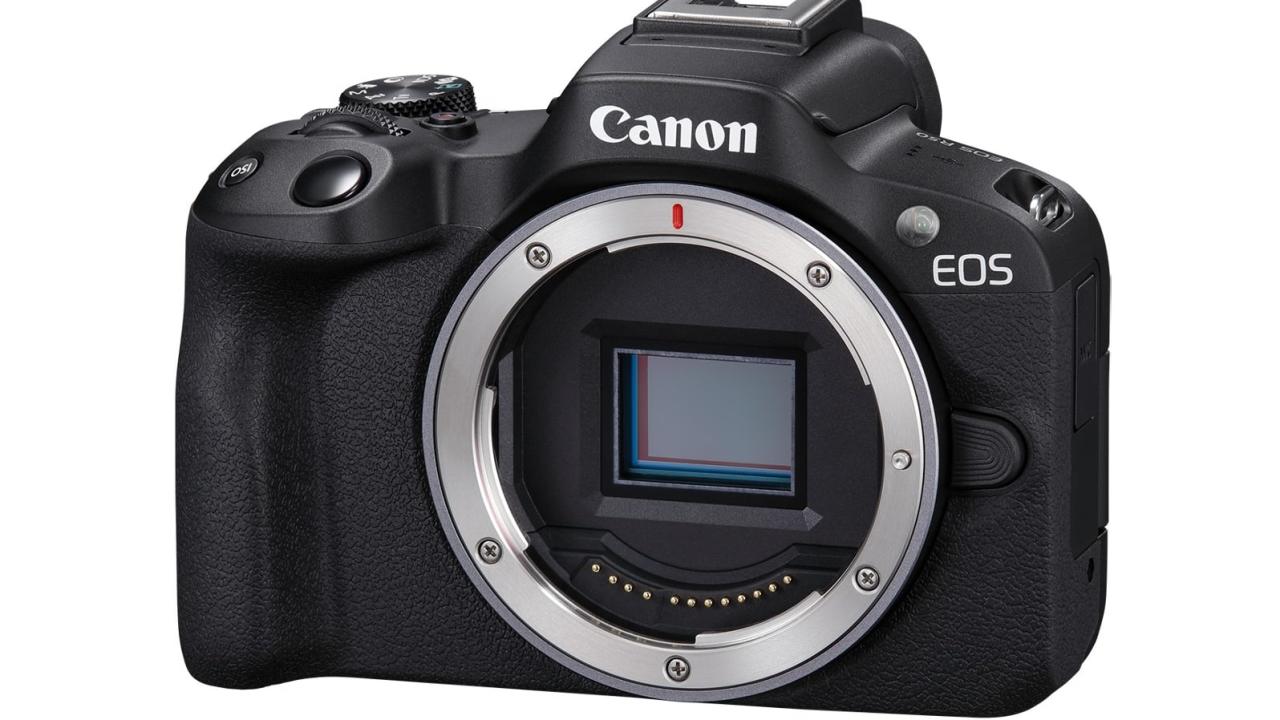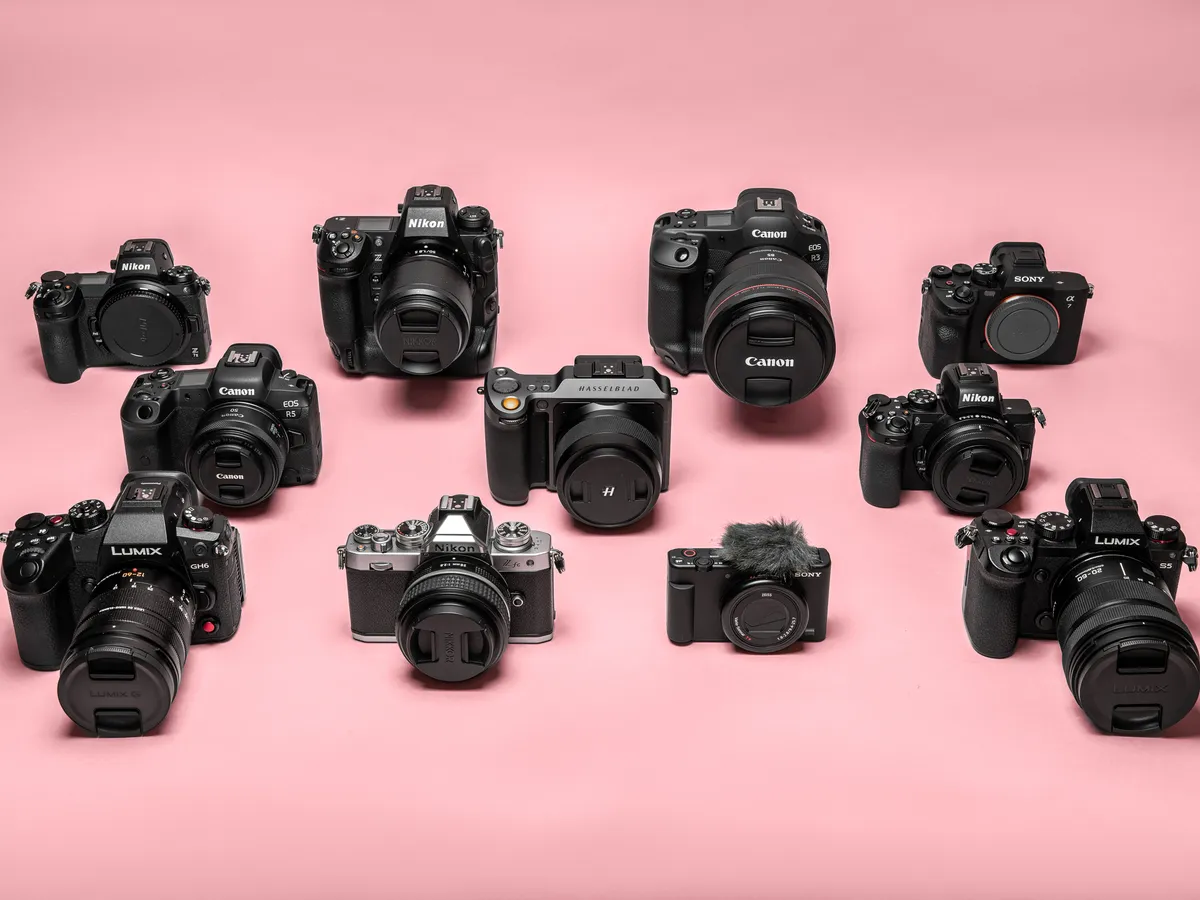Introduction
When it comes to capturing moments and creating lasting memories, a digital camera has become an essential tool in today’s world. It has revolutionized the way we take photos, offering convenience, versatility, and instant results. But within the realm of digital cameras, there is a specific type that stands out: the digital SLR camera, commonly known as DSLR. While both digital cameras and digital SLR cameras serve the purpose of capturing images digitally, there are significant differences between the two. Understanding these differences can help you make an informed decision when choosing the right camera for your needs.
A digital camera is a broad term that encompasses a range of devices designed for capturing and storing digital images. These cameras are smaller, compact, and often feature automatic settings for ease of use. They are commonly used by casual photographers and individuals who want to capture everyday moments without too much hassle. Digital cameras typically have built-in lenses and offer a variety of shooting modes, including auto, landscape, portrait, and more.
In contrast, a digital SLR camera is a more advanced and professional-grade camera that offers higher image quality, greater control, and interchangeable lenses. DSLR cameras are favored by photography enthusiasts, professional photographers, and those who want to take their photography skills to the next level. The key difference between a digital camera and a digital SLR camera lies in its design and functionality.
So, what sets a digital SLR camera apart from a digital camera? Let’s delve deeper into the key differences between the two.
What is a Digital Camera?
A digital camera is a device that captures and stores images digitally, eliminating the need for film and allowing for instant viewing and sharing of photos. It is a compact and portable device that has become increasingly popular in today’s digital age.
One of the key features of a digital camera is its ability to convert light into a digital image through the use of a image sensor. This sensor captures the light that enters the camera through the lens and converts it into a digital format that can be stored on a memory card or internal storage. This digital image can then be viewed on the camera’s LCD screen or transferred to a computer for further editing and sharing.
Digital cameras come in various shapes and sizes, ranging from compact point-and-shoot cameras to more advanced mirrorless cameras. They are designed to be user-friendly, with easy-to-use settings and automatic modes that allow even novice photographers to capture great shots.
One of the advantages of digital cameras is their convenience and portability. They are lightweight and compact, making them easy to carry around and capture spontaneous moments on the go. Additionally, digital cameras offer a range of shooting modes and features, such as autofocus, image stabilization, and scene modes, that help users achieve better results without much technical knowledge.
Most digital cameras also have built-in flash units or the ability to attach external flashes, allowing for better lighting in low-light situations. Furthermore, digital cameras have the advantage of being able to record high-quality videos, making them versatile devices not only for photography but also for videography.
Overall, digital cameras are a popular choice for casual photographers who want to capture everyday moments, travel memories, and family events. They offer convenience, ease of use, and the ability to instantly view and share photos. However, for those looking for more advanced features, greater control, and higher image quality, a digital SLR camera may be a better option.
What is a Digital SLR Camera?
A Digital SLR camera, often referred to as DSLR, is a type of digital camera that offers advanced features and greater control over the image capturing process. It is designed for photography enthusiasts, professionals, and those who want to take their photography skills to the next level.
The key feature of a DSLR camera is its interchangeable lens system. Unlike digital cameras, DSLRs allow users to change lenses to suit different photography needs. This versatility gives photographers the ability to capture a wide range of subjects, from landscapes to portraits, with optimal image quality and creative flexibility.
Another distinguishing feature of a DSLR camera is its larger image sensor size. Most DSLRs boast larger sensors compared to digital cameras, resulting in better image quality, improved low-light performance, and reduced noise levels in images. The larger sensor size also allows for greater control over depth of field, allowing photographers to create beautifully blurred backgrounds or achieve sharp focus throughout the image.
DSLR cameras also offer advanced manual control options, giving photographers the ability to fine-tune settings such as shutter speed, aperture, and ISO. This level of control allows for creative experimentation and precision in capturing the desired image. Additionally, DSLRs often feature customizable buttons and dials, making it easier for photographers to access commonly used settings and quickly adjust them while shooting.
One significant advantage of a DSLR camera is its responsiveness and shooting speed. DSLRs are designed to capture images quickly, making them ideal for situations where timing is critical, such as sports or wildlife photography. They typically have faster autofocus systems and continuous shooting modes, allowing users to capture multiple frames per second, ensuring that no moment is missed.
In terms of build quality and durability, DSLRs are often built to withstand more rugged conditions. They have robust bodies made from high-quality materials that can withstand dust, moisture, and rough handling. This makes DSLR cameras suitable for outdoor and adventure photography, where protection and reliability are crucial.
While digital SLR cameras offer numerous benefits, it’s worth noting that they are generally bulkier and heavier compared to digital cameras. This can be a consideration for those who prioritize portability and ease of carrying their camera.
Overall, a digital SLR camera is a powerful tool for photographers who demand high performance, flexibility, and control over their images. Whether you’re an aspiring professional or a passionate hobbyist, a DSLR camera can elevate your photography game and help you capture stunning images with exceptional quality.
Sensor Size
The sensor size is a critical factor in digital photography, and it plays a significant role in determining image quality. Sensor size refers to the dimensions of the light-sensitive surface inside the camera that captures the image. In general, digital SLR cameras have larger image sensors compared to digital cameras.
DSLR cameras typically use APS-C or full-frame sensors, as opposed to the smaller sensors used in digital cameras. The larger sensor size allows for more efficient light gathering, resulting in improved low-light performance, reduced image noise, and better overall image quality. This advantage becomes evident when shooting in challenging lighting conditions or capturing images with a wide dynamic range.
The larger sensor size of DSLR cameras also provides better control over depth of field. With a larger sensor, photographers can achieve a shallower depth of field, allowing for creative effects like background blur or selective focus. This is particularly advantageous in portrait photography or when focusing on a specific subject while creating separation from the background.
In contrast, digital cameras typically use smaller sensors, such as compact or micro four-thirds sensors. These smaller sensors have their advantages, such as allowing for more compact camera designs and offering a deeper depth of field, making it easier to get everything in focus. However, they generally struggle with capturing images in low-light situations and tend to produce more noticeable image noise.
In summary, the larger sensor size of DSLR cameras gives them a distinct advantage in terms of image quality. They offer better low-light performance, greater dynamic range, and the ability to create more pronounced background blur. However, it’s important to note that sensor size is not the sole determinant of image quality. Factors such as pixel count, image processing algorithms, and the quality of the lens also play significant roles in producing high-quality images.
Lens Options
One of the significant advantages of digital SLR cameras over digital cameras is the wide range of lens options available. DSLR cameras offer interchangeable lenses, allowing photographers to choose the perfect lens for each photographic situation.
The ability to change lenses provides versatility and flexibility in capturing different types of subjects. DSLR lenses come in various focal lengths, ranging from wide-angle lenses to telephoto lenses and everything in between. Each lens has its own characteristics and is designed to excel in specific photography genres.
Wide-angle lenses are great for landscape photography, as they can capture a broad field of view and emphasize the vastness of a scene. They also work well for architectural photography, allowing photographers to fit large structures into the frame without distortion.
Standard or normal lenses are generally around 50mm focal length and provide a similar perspective to human vision. They are versatile lenses suitable for everyday photography, street photography, and portraits.
Telephoto lenses, on the other hand, have longer focal lengths and allow photographers to get closer to distant subjects. They are ideal for wildlife photography, sports photography, and capturing details from a distance.
Macro lenses are specialized lenses that enable extreme close-up photography, capturing minute details of subjects such as flowers, insects, or jewelry. They offer high magnification and superb sharpness, allowing for stunning macro images.
Furthermore, DSLR cameras also have the advantage of compatibility with lenses from various manufacturers. This opens up a vast range of lens options, including lenses from renowned third-party manufacturers, giving photographers more choices to suit their budget and specific needs.
It’s important to note that lenses can greatly impact image quality. Higher-end lenses often offer superior optical quality, sharper images, and more advanced features such as image stabilization. Investing in quality lenses can significantly enhance the overall performance and results of a DSLR camera.
Overall, the ability to interchange lenses is a significant advantage of DSLR cameras, offering photographers the freedom to choose lenses that best suit their creative vision and photographic requirements.
Image Quality
Image quality is a crucial factor to consider when comparing digital cameras and digital SLR cameras. DSLR cameras generally offer higher image quality due to various factors, including sensor size, lens quality, and image processing capabilities.
As mentioned earlier, DSLR cameras typically have larger sensors, such as APS-C or full-frame sensors, which capture more light and produce images with better dynamic range and lower noise levels. This results in superior image quality, particularly in low-light situations or high-contrast scenes.
In addition to sensor size, DSLR cameras also provide the advantage of interchangeable lenses. High-quality lenses with excellent optics can significantly contribute to image sharpness, contrast, and overall clarity. Professional-grade lenses are designed to minimize aberrations and distortion, delivering exceptional image quality across the frame.
Moreover, DSLR cameras often offer raw file format support, allowing photographers to capture images with greater detail and more editing flexibility. Raw files retain all the captured data, providing more latitude for adjustments in post-processing compared to compressed JPEG files. This gives photographers more control over the final image and the ability to correct exposure, white balance, and other settings without compromising image quality.
The advanced image processing capabilities of DSLR cameras further enhance image quality. These cameras typically feature powerful processors that can handle complex algorithms for noise reduction, image sharpening, and color accuracy. This results in images with finer details, better colors, and smoother tonal gradations.
While digital cameras can also produce high-quality images, their smaller sensors and fixed lenses may limit their capability to match the image quality of DSLRs. However, it’s worth noting that the image quality difference between digital cameras and DSLRs may not be noticeable for casual or everyday photography needs. For most users, digital cameras are more than capable of producing satisfactory image quality for sharing on social media or printing standard-sized photos.
In summary, if image quality is a top priority and you require the utmost detail, dynamic range, and low-light performance, a digital SLR camera is likely to deliver superior results. DSLR cameras, with their larger sensors, interchangeable lenses, and powerful image processors, offer professional-grade image quality that can satisfy even the most demanding photographers.
Manual Control
One of the significant advantages of DSLR cameras over digital cameras is the level of manual control they offer to photographers. DSLR cameras provide extensive control over camera settings, allowing users to have precise control over the final image.
DSLR cameras are designed with dedicated buttons, dials, and menus that provide quick and easy access to essential settings such as aperture, shutter speed, ISO, and white balance. This direct control allows photographers to make adjustments on the fly, giving them greater control over the exposure and creative elements of their images.
Manual control over aperture, for example, allows photographers to adjust the lens opening, which directly affects the depth of field. By setting a wider aperture (lower f-number), photographers can achieve a shallow depth of field, blurring the background and emphasizing the subject. Conversely, a narrower aperture (higher f-number) results in a larger depth of field, allowing for more elements to be in focus.
Shutter speed control is another crucial aspect of manual control in DSLR cameras. By adjusting the shutter speed, photographers can control the amount of time the camera’s sensor is exposed to light. This enables freezing fast-moving subjects with a faster shutter speed or creating motion blur with a slower shutter speed.
ISO control is yet another factor that contributes to manual control. ISO determines the camera’s sensitivity to light, and adjusting it allows photographers to adapt to different lighting conditions. A lower ISO setting produces images with less noise but may require longer exposure times, while a higher ISO setting allows for faster shutter speeds but may introduce more digital noise into the image.
Furthermore, DSLR cameras often feature advanced metering systems, allowing precise exposure metering and the ability to manually fine-tune exposure compensation. This helps photographers achieve accurate exposure even in challenging lighting situations.
Manual control over white balance is another advantage of DSLRs. White balance adjusts the camera’s color temperature settings to accurately reproduce colors under different lighting conditions. By manually setting the white balance, photographers can ensure that colors are rendered accurately and consistently across different scenes.
Overall, the manual control capabilities of DSLR cameras provide photographers with the freedom and flexibility to fine-tune every aspect of the image capture process. This level of control is especially valuable for photographers who want to have complete creative control over their images and tailor the settings to their specific vision.
Size and Portability
When it comes to size and portability, digital cameras have the advantage over DSLR cameras. Digital cameras are typically smaller, more compact, and lighter in weight than their DSLR counterparts.
The compact size of digital cameras makes them highly portable and convenient for everyday carry. They easily fit into a pocket or a small bag, making them suitable for capturing spontaneous moments and carrying them on travel adventures.
On the other hand, DSLR cameras are larger and heavier due to their advanced technology, built-in components, and interchangeable lens systems. While this might be seen as a disadvantage in terms of portability, the larger size of DSLRs often brings other advantages.
The larger size of DSLR cameras allows for more ergonomic handling. They have a substantial grip, providing a comfortable and secure grip for extended shooting sessions. Additionally, the larger body often accommodates more physical controls and a larger LCD screen, making it easier to access settings and preview images.
In terms of portability, DSLR cameras are still portable but may require a dedicated camera bag or backpack to carry the camera body, lenses, and accessories. While this may add some bulk, it is a worthy trade-off for photographers who prioritize image quality, manual control, and lens versatility.
Despite the larger size, DSLR cameras’ portability is enhanced by the ability to remove and switch lenses. This flexibility allows photographers to choose the most suitable lens for the specific shooting situation, providing greater creative freedom and the ability to capture a wide range of subjects.
It’s important to consider the intended use and personal preferences when deciding between a digital camera and a DSLR in terms of size and portability. If portability and ease of use are the main priorities, a digital camera’s smaller size may be a better fit. However, if image quality, versatile lens options, and manual control are more important, a DSLR camera’s larger size becomes a worthwhile compromise.
Ultimately, the size and portability factors should be considered in relation to the intended usage and the photographer’s comfort. Both digital cameras and DSLR cameras offer valuable features and capabilities, and the size and portability decision should align with the specific needs and shooting preferences of the individual photographer.
Shooting Speed
Shooting speed is a significant factor to consider when comparing digital cameras and DSLR cameras. DSLR cameras generally have a faster shooting speed and burst mode capabilities, making them ideal for capturing fast-paced action and ensuring you never miss a crucial moment.
DSLR cameras are equipped with powerful processors and advanced autofocus systems, allowing for rapid image processing and quick focusing. This results in faster overall performance and faster reaction times when capturing images.
One key feature that contributes to the shooting speed of DSLR cameras is their ability to shoot in burst mode. Burst mode allows the camera to capture multiple frames per second, giving photographers the ability to maintain focus on a moving subject and increase the chance of capturing the perfect shot in fast-paced situations. This makes DSLR cameras popular among sports photographers, wildlife photographers, and anyone who needs to capture split-second moments.
Moreover, DSLR cameras typically have a shorter shutter lag compared to digital cameras. Shutter lag refers to the delay between pressing the shutter button and the camera actually capturing the image. With reduced shutter lag, DSLR cameras offer more responsiveness and the ability to capture images at the exact moment you intend.
Digital cameras, while still capable of capturing great images, may have limitations in terms of shooting speed and burst mode. They may have slower autofocus systems and longer buffering times, resulting in longer delays between shutter releases and longer intervals between bursts of continuous shooting.
Of course, it’s important to consider that shooting speed is not the only factor to consider in determining the overall performance of a camera. Image quality, lens options, and manual control also play crucial roles in creating outstanding photographs.
When deciding between a digital camera and a DSLR camera, it’s essential to consider your specific photography needs and shooting style. If you frequently capture fast-moving subjects or find yourself needing to shoot in burst mode, a DSLR camera’s faster shooting speed and burst capabilities may be an advantage worth considering.
However, if shooting speed is not a critical factor for your photography needs, digital cameras can still deliver excellent results and may be more suitable due to their smaller size, portability, and ease of use.
Battery Life
Battery life is an important consideration when comparing digital cameras and DSLR cameras, as it directly impacts the amount of time you can use the camera before needing to recharge or replace the batteries. DSLR cameras generally have a longer battery life compared to digital cameras due to their larger size and more powerful components.
The larger body of DSLR cameras allows for larger battery packs, which can hold more power and provide longer shooting durations. This is particularly advantageous when shooting in situations where you may not have easy access to charging facilities, such as during outdoor adventures or extended photo shoots.
DSLR cameras also have more power-hungry components, such as larger image sensors, advanced autofocus systems, and faster processors. However, they are designed to be more energy-efficient and optimized for longer battery life. This means that DSLR cameras can typically take more shots or record more videos before the battery is depleted.
Additionally, DSLR cameras often offer power-saving features, such as sleep or standby modes, that help conserve battery life when the camera is not in use. These features automatically deactivate certain functions or reduce power consumption during periods of inactivity, extending the overall battery life.
On the other hand, digital cameras generally have smaller bodies, which allow for smaller battery packs. As a result, their battery life may not be as long as DSLR cameras. While this may not be an issue for casual use, it can become a concern when you need to use the camera for an extended period without access to charging facilities.
It’s worth noting that battery life can be influenced by several factors, including the camera’s settings, shooting modes, use of flash or image stabilization, LCD screen usage, and environmental conditions (such as extreme temperatures). These factors can affect how quickly the battery drains and should be taken into consideration when planning your photography sessions.
Using spare batteries or investing in high-capacity batteries can help extend shooting time and ensure you don’t miss any important moments. Additionally, having a backup power source, such as a portable power bank, can provide peace of mind and allow you to recharge your camera’s battery on the go.
In summary, DSLR cameras generally offer longer battery life compared to digital cameras due to their larger size, more power-hungry components, and optimized energy efficiency. However, it’s important to consider your specific photography needs and shooting style when evaluating the importance of battery life. Carrying spare batteries and being mindful of battery usage can help ensure that you have enough power to capture all the moments you desire.
Price
Price is a significant factor to consider when deciding between a digital camera and a DSLR camera. Generally, digital cameras are more affordable than DSLR cameras, making them a popular choice for casual photographers or those on a tight budget.
Digital cameras come in a wide range of prices, from budget-friendly options to more high-end models. This variety allows photographers to find a camera that fits their budget and needs without breaking the bank. With advancements in technology, digital cameras have become more affordable while still offering good image quality and a range of features.
On the other hand, DSLR cameras are typically more expensive than digital cameras. This is due to their advanced technology, larger sensors, interchangeable lens systems, and overall higher-quality build. DSLR cameras are designed for photography enthusiasts and professionals who require better image quality, manual control, and the flexibility of lens options.
It’s important to consider that the initial investment in a DSLR camera is not limited to just the camera body. Interchangeable lenses can add to the overall cost, as high-quality lenses can be quite expensive. However, investing in quality lenses can greatly enhance the versatility and image quality of a DSLR system.
While DSLR cameras may have a higher upfront cost, they offer excellent long-term value for those who are serious about photography. DSLR systems allow for future growth and expandability, as photographers can upgrade their camera body while retaining their existing collection of lenses and accessories.
When deciding between a digital camera and a DSLR camera, consider your budget, your level of photography interest and commitment, and your specific needs and expectations. It’s important to find a camera that fits your budget while also providing the features, image quality, and manual control that you desire.
Lastly, it’s worth mentioning that regardless of the camera type, there is a wide range of options available at various price points. Researching and comparing different models can help you find the best camera within your budget, ensuring that you get the most out of your investment.
Conclusion
Choosing between a digital camera and a DSLR camera ultimately depends on your specific photography needs, preferences, and budget. Both types of cameras have their advantages and limitations, and understanding these differences can guide you in making the right decision.
If convenience, portability, and ease of use are your top priorities, a digital camera may be the ideal choice. Digital cameras are compact, lightweight, and offer simplicity and automatic shooting modes, making them great for casual photographers, travel enthusiasts, or individuals who want to capture everyday moments without too much complexity.
On the other hand, if you are passionate about photography, desire greater control over your images, and seek higher image quality, a DSLR camera is likely to be the better option. DSLRs offer advanced features, interchangeable lenses, manual control options, and improved image quality, making them a favorite among photography enthusiasts, professionals, and anyone seeking to elevate their photography skills.
Consider important factors such as sensor size, lens options, image quality, manual control, shooting speed, battery life, and price when making your decision. Assess your photography goals, the types of subjects you plan to shoot, the level of control you desire, and your commitment to the craft.
Remember, the choice between a digital camera and a DSLR camera is subjective and should align with your personal preferences and requirements. Ultimately, the camera that suits your needs and brings you joy in capturing memorable moments is the one that will empower your photography journey.
Take the time to research and explore different camera models, try them out if possible, and read reviews from reputable sources. This will help you make an informed decision and select the camera that will be your trusted companion and tool for capturing memories and unleashing your creativity.







